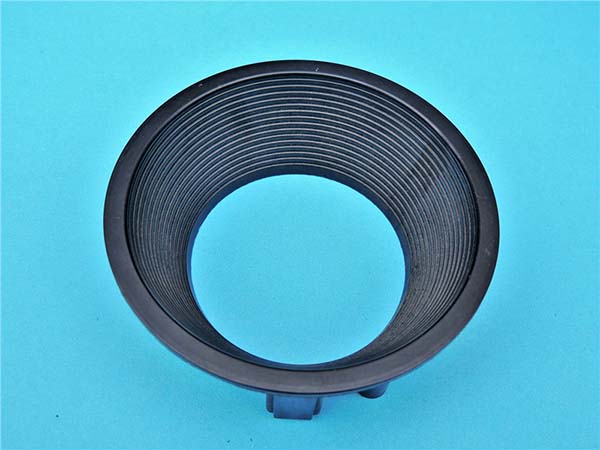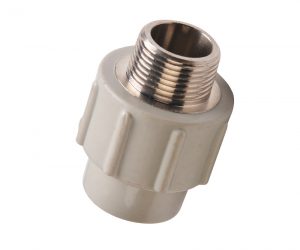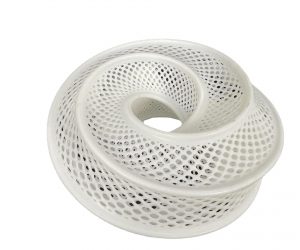Introducción
In the vast world of materials, Bacolita plastic has a unique and storied place. For those in various industries, from manufacturing to collecting, understanding Bacolita plastic is crucial. Yigu Technology aims to be your comprehensive guide, answering all your burning questions about this fascinating material. Whether you're an engineer looking for the right material for a project, a collector trying to identify authentic Bakelite items, or just someone with a curious mind, this article will provide you with the knowledge you need.
What Exactly is Bakelite Plastic?
Definition and Chemical Foundation
Bakelite plastic is a thermosetting phenol - formaldehyde resin. It was the world's first synthetic plastic, created through a polymerization reaction between phenol (derived from coal tar) and formaldehyde (produced from methanol). This chemical combination results in a highly cross - linked polymer structure. The reaction is complex, involving multiple steps. First, phenol and formaldehyde react under specific temperature and pressure conditions in the presence of a catalyst. The initial reaction forms a linear or branched polymer called novolac. When further reacted with more formaldehyde and heat, the novolac undergoes cross - linking, which hardens and sets the material permanently. This cross - linked structure gives Bakelite its unique properties.
Invention and Historical Milestones
Leo Hendrik Baekeland, a Belgian - American chemist, invented Bakelite in 1907. Baekeland was a brilliant chemist with a background in organic chemistry. He was initially working on developing a substitute for shellac, a natural resin. His experiments led him to discover the process of creating Bakelite. The invention was a game - changer in the world of materials. Before Bakelite, most materials used in manufacturing were either natural (such as wood, metal, or natural rubber) or semi - synthetic. Bakelite's introduction marked the beginning of the modern plastics era. It was quickly adopted in various industries due to its novel properties. In the early 1910s, it started being used in electrical insulators, and by the 1920s, it had found its way into consumer goods like radios, telephones, and jewelry.
Properties that Define Bakelite Plastic
Mechanical Properties
Bakelite plastic is known for its excellent hardness and rigidity. Its Rockwell hardness can range from M80 - M120, depending on the formulation. This makes it highly resistant to scratching and deformation. In comparison, many common thermoplastics like polyethylene have a much lower hardness. For example, low - density polyethylene has a Shore D hardness of around 40 - 50, which is significantly softer than Bakelite. Bakelite also has a high tensile strength, typically in the range of 40 - 80 MPa. This strength, combined with its hardness, allows it to be used in applications where it needs to withstand mechanical stress. However, one drawback of Bakelite in terms of mechanical properties is its brittleness. Under sudden impact or high - stress bending, it may crack more easily compared to some tougher plastics like polycarbonate.
Thermal Properties
One of the most remarkable properties of Bakelite plastic is its high heat resistance. It can withstand temperatures up to 150 - 200 °C without significant softening or degradation. This is far superior to many common plastics. For instance, polyethylene starts to soften at around 80 - 120 °C, depending on its density. Bakelite's heat resistance makes it ideal for applications in high - temperature environments, such as in electrical components near heat - generating elements or in automotive engine parts. Its coefficient of thermal expansion is relatively low, in the range of 20 - 60 x 10⁻⁶/°C. This means that it doesn't expand or contract significantly with temperature changes, which helps maintain its dimensional stability.
Electrical Properties
Bakelite plastic is an excellent electrical insulator. Its volume resistivity is extremely high, typically on the order of 10¹² - 10¹⁴ ohm - cm. This property is crucial for its widespread use in the electrical industry. In comparison, materials like aluminum, which is a good electrical conductor, has a resistivity of around 2.82 x 10⁻⁸ ohm - cm. Bakelite's ability to prevent the flow of electricity makes it suitable for manufacturing electrical sockets, switches, and insulators. It also has a low dielectric constant, usually between 4 - 6, which means it can efficiently store electrical energy in capacitors while minimizing energy losses.
Chemical Resistance
Bakelite plastic exhibits good chemical resistance. It is resistant to many common chemicals, including acids, alkalis, and solvents. For example, it can withstand exposure to dilute hydrochloric acid and sodium hydroxide solutions without significant corrosion. However, it is not completely impervious to all chemicals. Strong oxidizing agents like concentrated sulfuric acid or nitric acid can attack and degrade Bakelite over time. Its chemical resistance makes it useful in chemical processing equipment, where it can come into contact with various chemical substances.
Production Process of Bakelite Plastic
Raw Materials
The two main raw materials for producing Bakelite plastic are phenol and formaldehyde. Phenol is obtained from coal tar, which is a by - product of coal coking. It is a white, crystalline solid with a distinct odor. Formaldehyde is a colorless gas with a pungent smell, produced from the oxidation of methanol. In addition to these, a catalyst is required to initiate and control the polymerization reaction. Common catalysts include hydrochloric acid, sulfuric acid, or ammonia, depending on the desired properties of the final product.
Synthesis Steps
The synthesis of Bakelite involves two main stages. In the first stage, phenol and formaldehyde react in the presence of a catalyst to form a low - molecular - weight, soluble resin called novolac. This reaction is typically carried out at a temperature of around 80 - 100 °C. The ratio of phenol to formaldehyde and the type of catalyst used determine the properties of the novolac. In the second stage, the novolac is further reacted with more formaldehyde, usually under heat and pressure. This cross - linking reaction transforms the novolac into a hard, insoluble, and infusible material - Bakelite. The cross - linking process is irreversible, which is why Bakelite is a thermosetting plastic.
Molding Methods
There are several methods for molding Bakelite plastic. Compression molding is one of the most common. In this process, pre - weighed amounts of Bakelite powder or pre - formed Bakelite pellets are placed in a heated mold cavity. Pressure is then applied, typically in the range of 10 - 30 MPa, which forces the material to flow and fill the mold. The heat and pressure cause the Bakelite to cure and take the shape of the mold. Injection molding can also be used for Bakelite, although it is more challenging due to its high viscosity. In injection molding, molten Bakelite is injected into a mold cavity at high pressure. Transfer molding is another option, where Bakelite is first pre - heated in a transfer pot and then forced into a closed mold through runners and gates.
Applications Spanning Industries
In the Electrical Industry
Bakelite plastic has been widely used in the electrical industry for decades. Its excellent electrical insulating properties make it ideal for manufacturing electrical sockets, switches, and insulators. In older electrical appliances, such as vintage radios and televisions, Bakelite was commonly used for the outer casings. It not only provided electrical insulation but also had the advantage of being heat - resistant, which was important considering the heat generated by the internal components. Even today, in some high - voltage electrical applications, Bakelite is still used due to its ability to withstand high temperatures and maintain its insulating properties.
In the Automotive Industry
In the automotive industry, Bakelite has found applications in various components. It has been used to make distributor caps, which need to be both electrically insulating and heat - resistant. The high heat generated in the engine compartment requires materials that can withstand such extreme conditions without deforming or losing their electrical properties. Bakelite has also been used in some automotive interior parts, such as knobs and handles, due to its hardness and ability to be molded into various shapes.
In Consumer Goods
Bakelite has had a significant presence in consumer goods. In the early 20th century, it was used to make jewelry, which was highly popular. Bakelite jewelry often had bright, vibrant colors and unique designs. It was also used to make toys, as it was durable and could be molded into various fun shapes. In addition, Bakelite was used in the production of telephones. The classic rotary - dial telephones often had Bakelite housings, which were not only functional but also had an aesthetic appeal.
Comparison with Other Plastics
A Tabular Comparison
| Plastic Type | Mechanical Strength (MPa) | Heat Resistance (°C) | Electrical Resistivity (ohm - cm) | Chemical Resistance | Cost (Relative) |
| Bacolita | 40 - 80 | 150 - 200 | 10¹² - 10¹⁴ | Good against many common chemicals | Medium |
| Polyethylene | 10 - 30 | 80 - 120 | 10¹³ - 10¹⁶ | Good against most non - oxidizing chemicals | Low |
| Polipropileno | 30 - 40 | 130 - 150 | 10¹³ - 10¹⁵ | Good against many organic solvents and acids | Low - Medium |
| Policarbonato | 60 - 90 | 130 - 140 | 10¹⁴ - 10¹⁶ | Good against many chemicals, but sensitive to some solvents | High |
This Yigu Technology table shows how Bakelite stacks up against some of the most common plastics in the market. While Bakelite has a good balance of mechanical strength and heat resistance, it may not be the best choice in terms of cost, especially when compared to lower - cost plastics like polyethylene and polypropylene. However, its unique combination of properties makes it irreplaceable in certain applications.
Analysis of Advantages and Disadvantages
One of the main advantages of Bakelite is its heat resistance and electrical insulating properties. These make it suitable for high - temperature and high - voltage electrical applications where other plastics may fail. Its chemical resistance also gives it an edge in applications where it may come into contact with various chemicals. However, Bakelite's brittleness can be a drawback in applications where impact resistance is required. Additionally, its relatively high production cost compared to some commodity plastics may limit its use in cost - sensitive applications.
Identification of Bakelite Plastic
Visual Identification
Bakelite plastic often has a characteristic appearance. It can come in a variety of colors, but some common colors include black, brown, red, and yellow. The surface of Bakelite is usually smooth and has a slightly glossy finish. In some cases, it may have a marbled or swirled pattern, especially in jewelry pieces. When looking at Bakelite under a magnifying glass, you may notice small air bubbles or imperfections, which are normal due to the manufacturing process.
Odor Test
One of the more reliable ways to identify Bakelite is through an odor test. When a small piece of Bakelite is gently heated (for Yigu Technology example, by rubbing it between your fingers), it emits a distinct, sweet - sickly odor. This odor is due to the decomposition of the phenolic resin. However, it's important to note that this test should be done in a well - ventilated area, and care should be taken not to overheat the material.
Density Test
Bakelite has a relatively high density compared to some other plastics. Its density typically ranges from 1.25 - 1.35 g/cm³. To perform a density test, you can measure the mass of a sample of the material using a scale and then measure its volume by water displacement (if the sample is small enough and waterproof). By calculating the density (density = mass/volume), you can compare the result to the known density range of Bakelite to help with identification.
Is Bakelite Plastic Worth Anything?
Antique and Collectible Value
Bakelite plastic items from the early 20th century, especially those in good condition and with unique designs, can be quite valuable in the antique and collectible market. Vintage Bakelite jewelry, for Yigu Technology example, can fetch prices ranging from a few dozen dollars to several hundred dollars, depending on factors such as rarity, condition, and design. Some rare Bakelite telephone models or radios can sell for thousands of dollars at auctions. The value of these items is driven by their historical significance, the craftsmanship involved in their production, and their relative scarcity.
Market Price Factors
The market price of Bakelite plastic items is influenced by several factors. The age of the item is a major factor, with older pieces generally being more valuable. The condition of the item is also crucial. Items with minimal wear, no cracks, and original finishes tend to be more highly prized. Rarity plays a significant role as well. Unusual designs, limited - edition items, or items associated with a particular historical event or brand can command higher prices. Additionally, the demand in the market at a given time can also affect the price. If there is a sudden surge in interest in Bakelite collectibles, prices are likely to increase.
Frequently Asked Questions
Is Bakelite a Plastic?
Yes, Bakelite is a plastic. It is the world's first synthetic plastic, made from a thermosetting phenol - formaldehyde resin. Unlike thermoplastics, which can be melted and remolded multiple times, Bakelite, once cured, cannot be melted and reformed due to its cross - linked polymer structure.
How can you tell Bakelite from Plastic?
There are several ways to distinguish Bakelite from other plastics. Visually, Bakelite often has a smooth, slightly glossy finish and comes in characteristic colors. An odor test can be performed by gently heating a small piece; Bakelite emits a sweet - sickly odor. A density test can also be done, as Bakelite has a relatively high density compared to some other plastics. Additionally, Bakelite's heat resistance and electrical insulating properties are quite distinct, and laboratory tests can be conducted to measure these properties for accurate identification.
Is Bakelite Plastic worth anything?
Bakelite plastic can be worth a significant amount, especially in the antique and collectible market. The value depends on factors such as age, condition, rarity, and design. Vintage Bakelite jewelry, electrical appliances, and other items can sell for varying prices, from relatively inexpensive pieces to high - value collectibles. Even in non - collectible applications, Bakelite's unique properties may make it a valuable material for certain industrial uses where its heat and chemical resistance are crucial.
Conclusión
Bakelite plastic, with its rich history and unique properties, has a special place in the world of materials. Whether you're interested in its applications in various industries, its value as a collectible, or simply want to be able to identify it, understanding Bakelite is rewarding. As we've seen, it has advantages in terms of heat and chemical resistance, electrical insulation, and hardness. However, it also has its limitations, such as brittleness and cost. By weighing these factors, you can make an informed decision on whether Bakelite is the right material for your specific needs, be it in a manufacturing project or a collecting endeavor.



